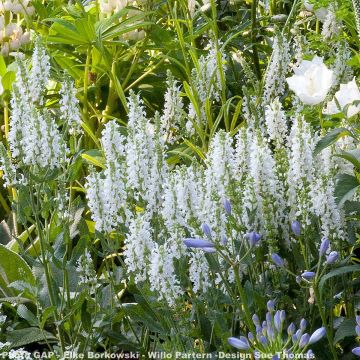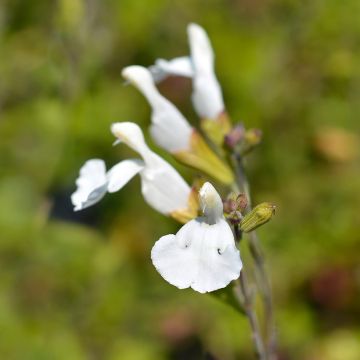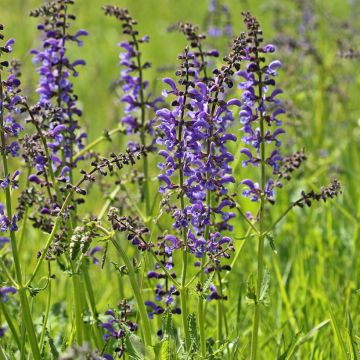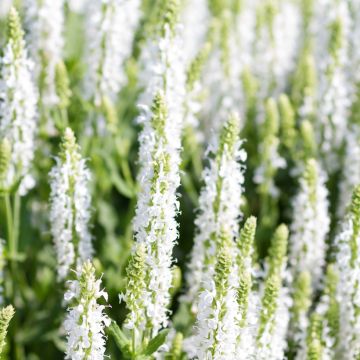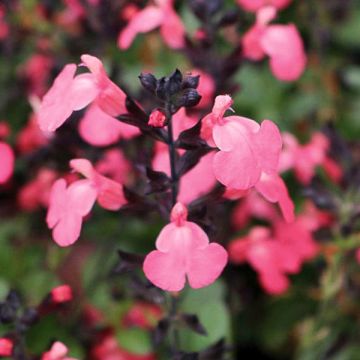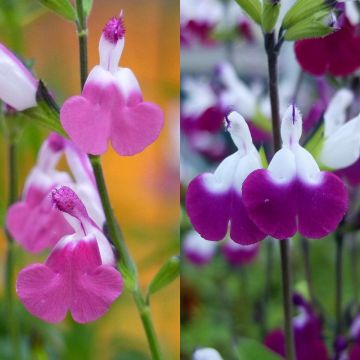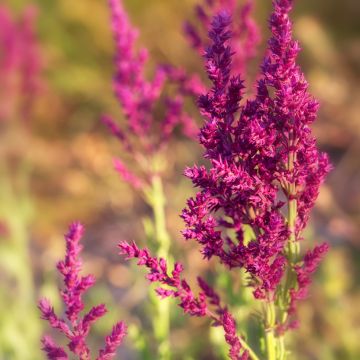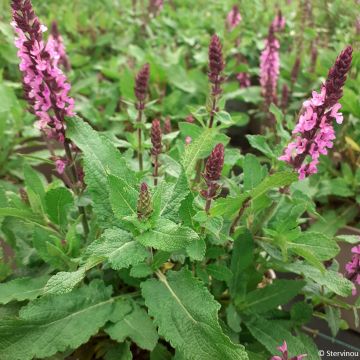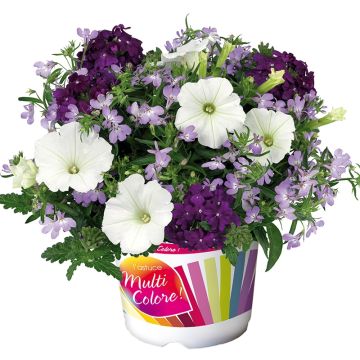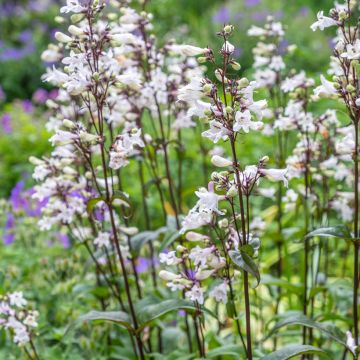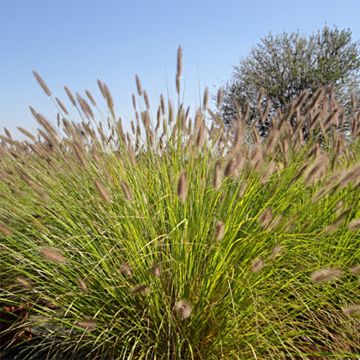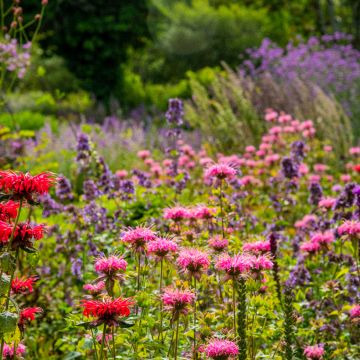

Salvia discolor
Salvia discolor
Salvia discolor
Blackcurrant Sage, Andean silver-leaved Sage, Peruvian Sage
An original sage that I had trouble getting from you, but unfortunately I'm not sure if it survived the winter.
Heloin M., 05/02/2023
Why not try an alternative variety in stock?
View all →This plant carries a 6 months recovery warranty
More information
We guarantee the quality of our plants for a full growing cycle, and will replace at our expense any plant that fails to recover under normal climatic and planting conditions.
From €5.90 for pickup delivery and €6.90 for home delivery
Express home delivery from €8.90.
Delivery to Corse prohibited: UE law prohibits the import of this plant from mainland France to Corse as part of the fight against Xylella fastidiosa. Please accept our sincere apologies.
More information

Does this plant fit my garden?
Set up your Plantfit profile →
Description
Salvia discolor, also known as Blackcurrant Sage or Andean Sage, is a lovely little evergreen perennial from Peru that is unusual, floriferous, and delightfully aromatic. It covers its stems and the undersides of its thick leaves with silver bristles, enticing with their delicious blackcurrant fragrance. It produces spikes of deep indigo-blue flowers, almost black, nestled in a silver-jade calyx. Moderately hardy, this unusual plant grows quickly and flowers for a long period. It thrives in light, fertile, well-drained soil that is moist but not waterlogged, in a sunny or partially shaded site. It can be grown both in borders and in a large pot.
Salvia discolor is sometimes called Peruvian Sage, or Bicoloured Sage due to its contrasting midnight blue and silver flowering. This perennial belongs to the Lamiaceae or Labiatae family. It originates from a small high-altitude station in the Peruvian Andes and is a rare aromatic species. The plant quickly forms a beautiful clump of semi-woody stems bearing large ovate leaves, green on the upper surface and covered with silver fuzz on the undersides. It reaches a height of 50 to 60 cm (23.6 in) with a diameter of about 50 cm (19.7 in). Depending on the growing conditions, it can sometimes grow to over 1 m (3 ft 4 in) in height, like a small climber. The nectar-rich and honey-scented flowering period is particularly long, starting in May and lasting until November, depending on the climate. The floral spikes are upright and have square-sectioned stems bearing paired flowers that are striking due to the contrast of the almost black corolla surrounded at the base by a silver-green sheathing calyx. The flowers consist of two elongated lips, indigo in color - a shade that truly attracts and captures attention in the garden. The evergreen foliage is composed of thick, aromatic, crenate-edged leaves measuring 12 cm (4.7 in) in length, slightly sticky, releasing a delightful essential oil with a fragrance reminiscent of blackcurrant when warmed. Its hardiness does not exceed -10°C (14°F) when kept in a protected position and dry soil during winter.
In its natural habitat, Blackcurrant Sage grows in cool, well-drained soils under a mountain climate. In a cool rock garden it can be paired with small alpine perennials such as gentians, saxifrages, wall bellflowers (Campanula portenschlagiana), Arenaria balearica, or the surprising small perennial geranium with black foliage, Geranium sessiliflorum 'Nigricans'. Gauras, tall sedums (Sedum 'Matrona'), and shrubby potentillas will also create a charming display when planted alongside it. On the terrace, it can be grown in a large pot for easy winter protection against severe frost.
Report an error about the product description
Salvia discolor in pictures
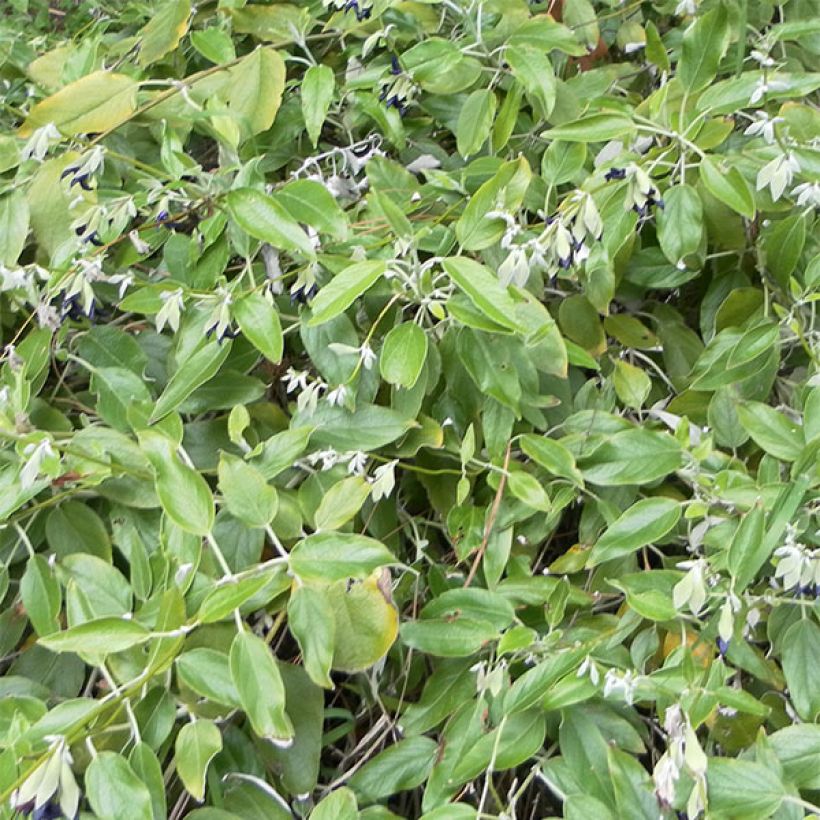

Flowering
Foliage
Plant habit
Botanical data
Salvia
discolor
Lamiaceae
Blackcurrant Sage, Andean silver-leaved Sage, Peruvian Sage
Andes Mountains
Other Salvia - Sage
Planting and care
Plant Salvia discolor after spring frosts in colder climates, in September-October in warm climates. Install it in a humus-rich, light, not too poor and non-drying soil to support flowering. This plant thrives in sunny sites, or even in partial shade. It requires regular watering in case of drought to flower abundantly. In poor soil, incorporate a little well-decomposed compost or leaf soil. Mulch it in winter and in the coldest regions isolate it from cold and rain as much as possible. Install it in the most sheltered corner of the garden, on a sandy slope or in any substrate that does not retain moisture, which would be fatal to it in winter. It tolerates pot cultivation wonderfully, which allows the most continental gardeners to store it.
Pot cultivation:
Salvia discolor should be installed in full sun from May onwards, and stored in a cool, frost-free place in autumn. A well-ventilated location is important for the health of the foliage, which must be able to dry quickly. The plant can be subject to attacks from scale insects indoors or in a greenhouse. During the winter period, watering should be greatly reduced. Severely prune the vegetation in spring.
In milder regions, such as coastal climates, outdoor cultivation is quite possible. The soil should remain moist in summer, and the plant should be frequently watered during the growing season. Prune it in autumn and cover the stump with straw and a weighted waterproof tarpaulin to protect the plant from combined cold and humidity.
Note that the growth of this sage is so fast that it can be perfectly cultivated as an annual.
Planting period
Intended location
Care
-
, onOrder confirmed
Reply from on Promesse de fleurs
Summer flowering perennials
Haven't found what you were looking for?
Hardiness is the lowest winter temperature a plant can endure without suffering serious damage or even dying. However, hardiness is affected by location (a sheltered area, such as a patio), protection (winter cover) and soil type (hardiness is improved by well-drained soil).

Photo Sharing Terms & Conditions
In order to encourage gardeners to interact and share their experiences, Promesse de fleurs offers various media enabling content to be uploaded onto its Site - in particular via the ‘Photo sharing’ module.
The User agrees to refrain from:
- Posting any content that is illegal, prejudicial, insulting, racist, inciteful to hatred, revisionist, contrary to public decency, that infringes on privacy or on the privacy rights of third parties, in particular the publicity rights of persons and goods, intellectual property rights, or the right to privacy.
- Submitting content on behalf of a third party;
- Impersonate the identity of a third party and/or publish any personal information about a third party;
In general, the User undertakes to refrain from any unethical behaviour.
All Content (in particular text, comments, files, images, photos, videos, creative works, etc.), which may be subject to property or intellectual property rights, image or other private rights, shall remain the property of the User, subject to the limited rights granted by the terms of the licence granted by Promesse de fleurs as stated below. Users are at liberty to publish or not to publish such Content on the Site, notably via the ‘Photo Sharing’ facility, and accept that this Content shall be made public and freely accessible, notably on the Internet.
Users further acknowledge, undertake to have ,and guarantee that they hold all necessary rights and permissions to publish such material on the Site, in particular with regard to the legislation in force pertaining to any privacy, property, intellectual property, image, or contractual rights, or rights of any other nature. By publishing such Content on the Site, Users acknowledge accepting full liability as publishers of the Content within the meaning of the law, and grant Promesse de fleurs, free of charge, an inclusive, worldwide licence for the said Content for the entire duration of its publication, including all reproduction, representation, up/downloading, displaying, performing, transmission, and storage rights.
Users also grant permission for their name to be linked to the Content and accept that this link may not always be made available.
By engaging in posting material, Users consent to their Content becoming automatically accessible on the Internet, in particular on other sites and/or blogs and/or web pages of the Promesse de fleurs site, including in particular social pages and the Promesse de fleurs catalogue.
Users may secure the removal of entrusted content free of charge by issuing a simple request via our contact form.
The flowering period indicated on our website applies to countries and regions located in USDA zone 8 (France, the United Kingdom, Ireland, the Netherlands, etc.)
It will vary according to where you live:
- In zones 9 to 10 (Italy, Spain, Greece, etc.), flowering will occur about 2 to 4 weeks earlier.
- In zones 6 to 7 (Germany, Poland, Slovenia, and lower mountainous regions), flowering will be delayed by 2 to 3 weeks.
- In zone 5 (Central Europe, Scandinavia), blooming will be delayed by 3 to 5 weeks.
In temperate climates, pruning of spring-flowering shrubs (forsythia, spireas, etc.) should be done just after flowering.
Pruning of summer-flowering shrubs (Indian Lilac, Perovskia, etc.) can be done in winter or spring.
In cold regions as well as with frost-sensitive plants, avoid pruning too early when severe frosts may still occur.
The planting period indicated on our website applies to countries and regions located in USDA zone 8 (France, United Kingdom, Ireland, Netherlands).
It will vary according to where you live:
- In Mediterranean zones (Marseille, Madrid, Milan, etc.), autumn and winter are the best planting periods.
- In continental zones (Strasbourg, Munich, Vienna, etc.), delay planting by 2 to 3 weeks in spring and bring it forward by 2 to 4 weeks in autumn.
- In mountainous regions (the Alps, Pyrenees, Carpathians, etc.), it is best to plant in late spring (May-June) or late summer (August-September).
The harvesting period indicated on our website applies to countries and regions in USDA zone 8 (France, England, Ireland, the Netherlands).
In colder areas (Scandinavia, Poland, Austria...) fruit and vegetable harvests are likely to be delayed by 3-4 weeks.
In warmer areas (Italy, Spain, Greece, etc.), harvesting will probably take place earlier, depending on weather conditions.
The sowing periods indicated on our website apply to countries and regions within USDA Zone 8 (France, UK, Ireland, Netherlands).
In colder areas (Scandinavia, Poland, Austria...), delay any outdoor sowing by 3-4 weeks, or sow under glass.
In warmer climes (Italy, Spain, Greece, etc.), bring outdoor sowing forward by a few weeks.

































